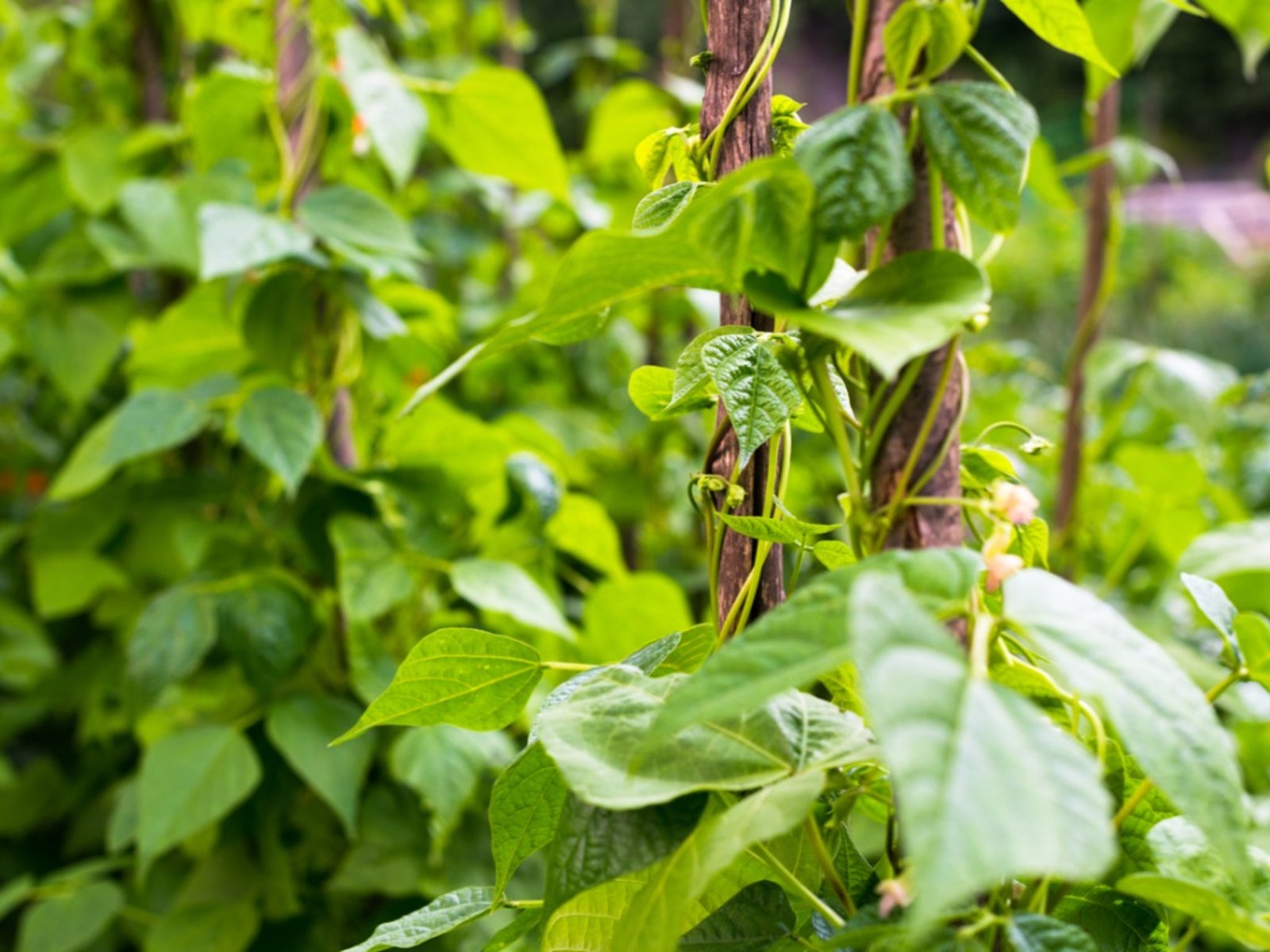Planting Pole Beans: How To Grow Pole Beans


Fresh, crisp beans are summer treats that are easy to grow in most climates. Beans may be pole or bush, however, growing pole beans allows the gardener to maximize planting space. Planting pole beans also ensures a longer crop period and may yield up to three times as many beans as the bush varieties. Pole beans require some training onto a pole or trellis, but this makes them easier to harvest and the graceful flowering vines add dimensional interest to the vegetable garden.
When to Plant Pole Beans
Weather is an important consideration when planting pole beans. Beans do not transplant well and do best when directly sown into the garden. Sow the seeds when soil temperatures are around 60 degrees F. (16 C.), and the ambient air has warmed to at least the same temperature. Most varieties require 60 to 70 days to first harvest and are normally harvested at least five times during the growing season.
How to Plant Pole Beans
Sow the seeds 4 to 8 inches (10-20 cm.) apart in rows that are 24 to 36 inches (61-91 cm.) apart in rows. Push the seeds 1 inch (2.5 cm.) and lightly brush soil over them. When planting them in hills, sow four to six seeds at even intervals around the hill. Water after planting until the top 2 to 3 inches (5-8 cm.) of soil are damp. Germination should take place in eight to ten days.
How to Grow Pole Beans
Pole beans need well drained soil and plenty of organic amendment to produce a large crop. Full sun situations are preferable in temperatures that are at least 60 degrees F. (16 C.). Pole beans need a support structure at least 6 feet (2 m.) high and the vines can grow 5 to 10 feet (1.5-3 m.) long. Pole beans need at least an inch (2.5 cm.) of water per week and should not be allowed to dry out, but also cannot tolerate soggy soils.
Beans need a little help climbing their support structure, especially when young. It's important to get them up off the ground early to prevent rot and loss of blooms. Pole beans need little fertilizer. Fertilizer should be added to the soil before planting pole beans. Side dress with manure or mulch or use black plastic to conserve moisture, minimize weeds, and keep soils warm for increased yield.
Harvesting Pole Beans
Harvesting beans begins as soon as the pods are full and swollen. Beans should be picked every three to five days to avoid harvesting older beans which can be woody and bitter. A single bean plant can yield several pounds of beans. The pods are best used fresh but they can be lightly blanched and frozen for future use. Consistent harvesting will encourage new flowers and promote longer living vines.
Varieties of Pole Beans
The most popular varieties are Kentucky Wonder and Blue Lake. They have been hybridized to produce Kentucky Blue. There is also a string-less Kentucky Blue. Romano is a delicious Italian flat bean. Dade grows long beans and is a prolific producer.
Gardening tips, videos, info and more delivered right to your inbox!
Sign up for the Gardening Know How newsletter today and receive a free copy of our e-book "How to Grow Delicious Tomatoes".

Bonnie Grant is a professional landscaper with a Certification in Urban Gardening. She has been gardening and writing for 15 years. A former professional chef, she has a passion for edible landscaping.
-
 4 Superfast Composting Methods: Turn Waste Into Garden Gold In 30 Days Or Less
4 Superfast Composting Methods: Turn Waste Into Garden Gold In 30 Days Or LessTry the fastest composting methods to turbocharge your pile and transform kitchen scraps and garden waste into finished compost in just a few weeks.
By Mary Ellen Ellis
-
 Best Spider Plant Soil – Complete Soil Guide And Expert Tips For Keeping Plants Happy
Best Spider Plant Soil – Complete Soil Guide And Expert Tips For Keeping Plants HappySpider plants are fun and easy plants to grow, but what is the best soil for a spider plant? Selecting the right soil is important so they can thrive.
By Bonnie L. Grant